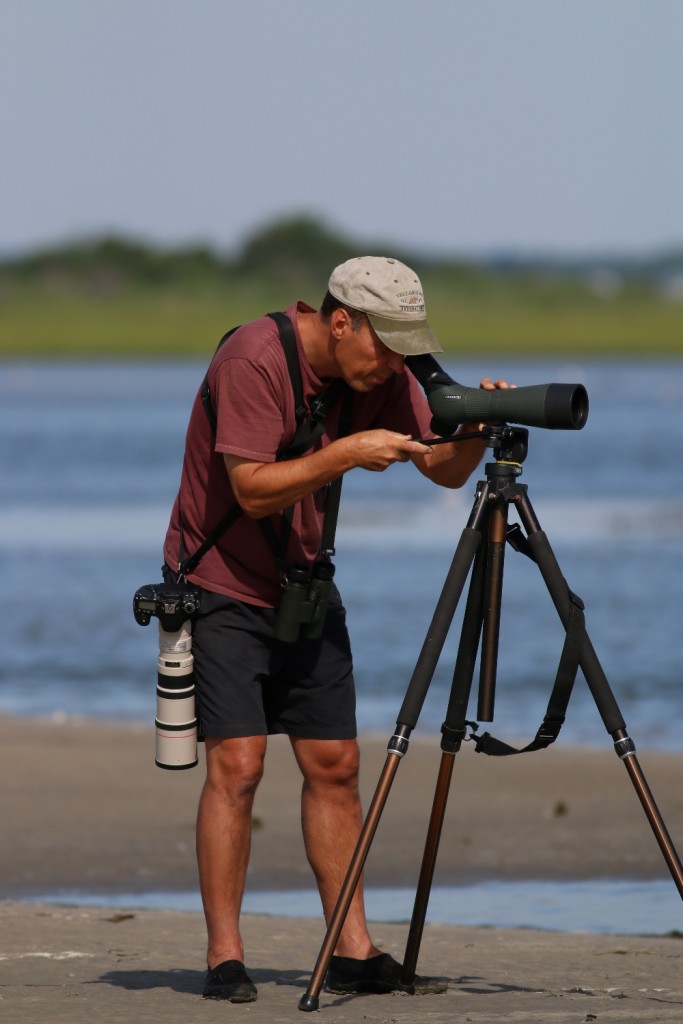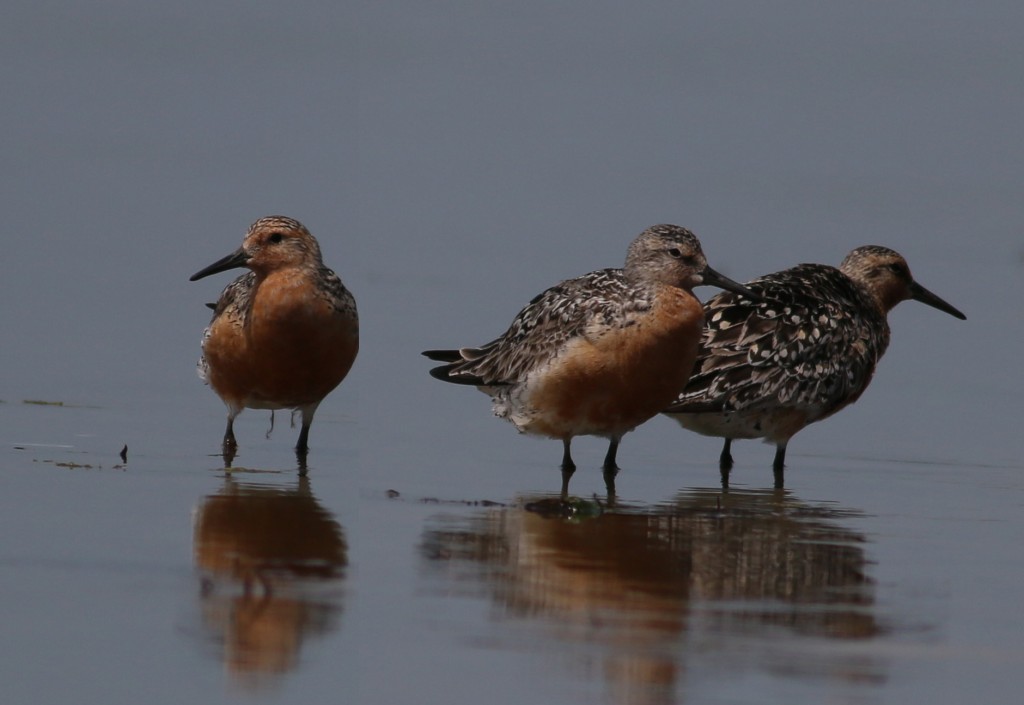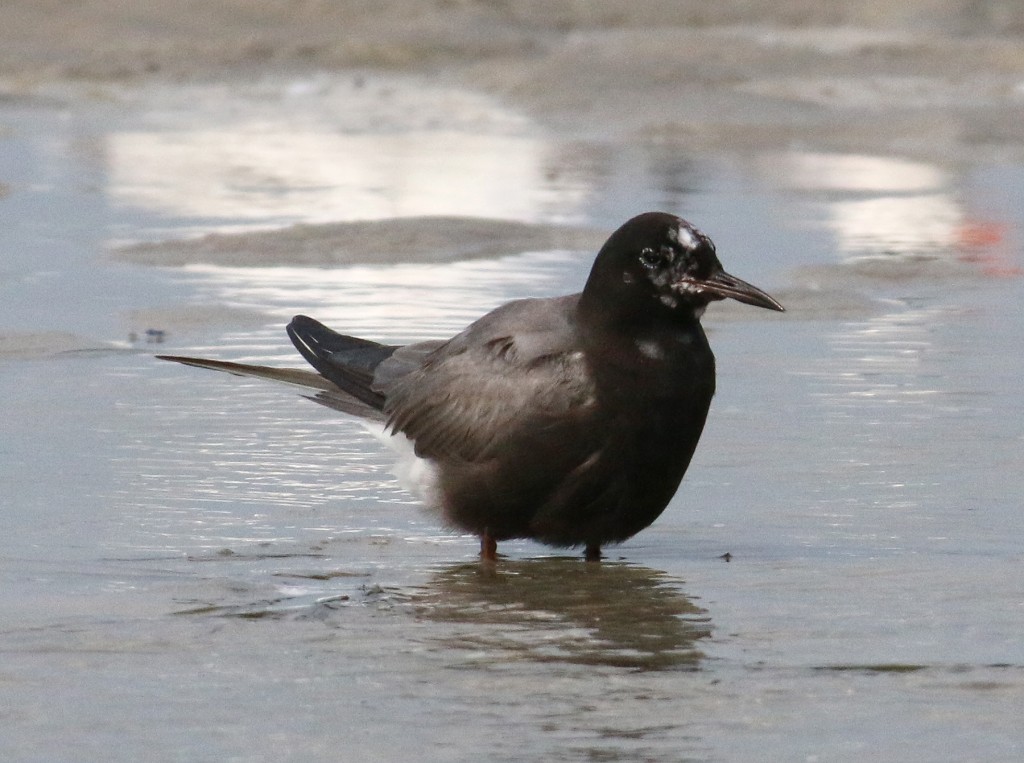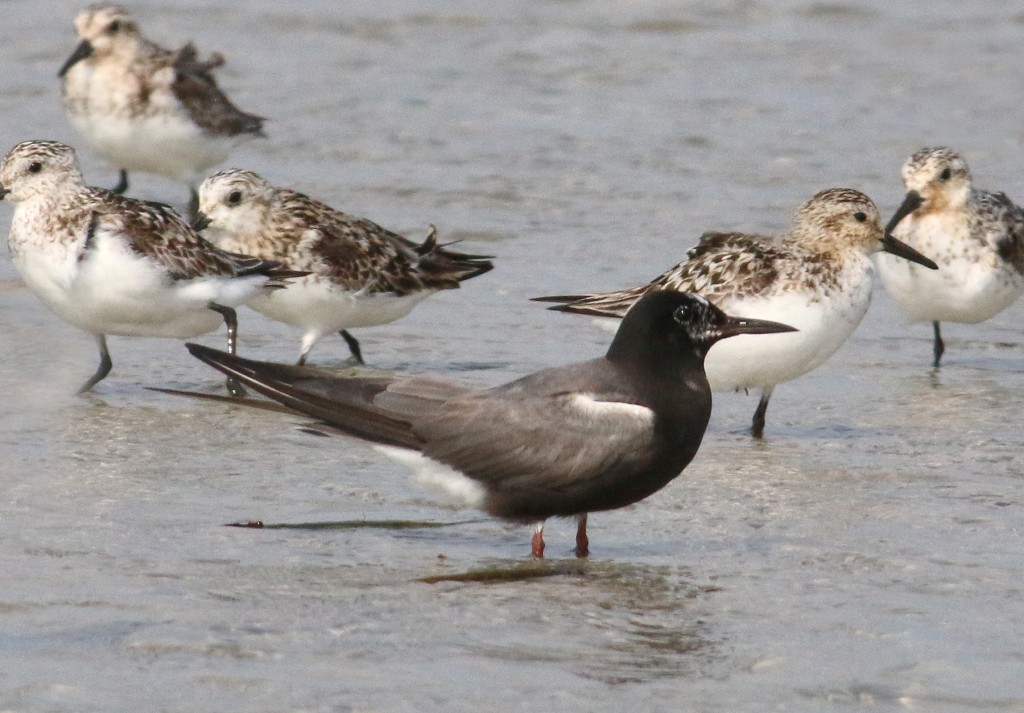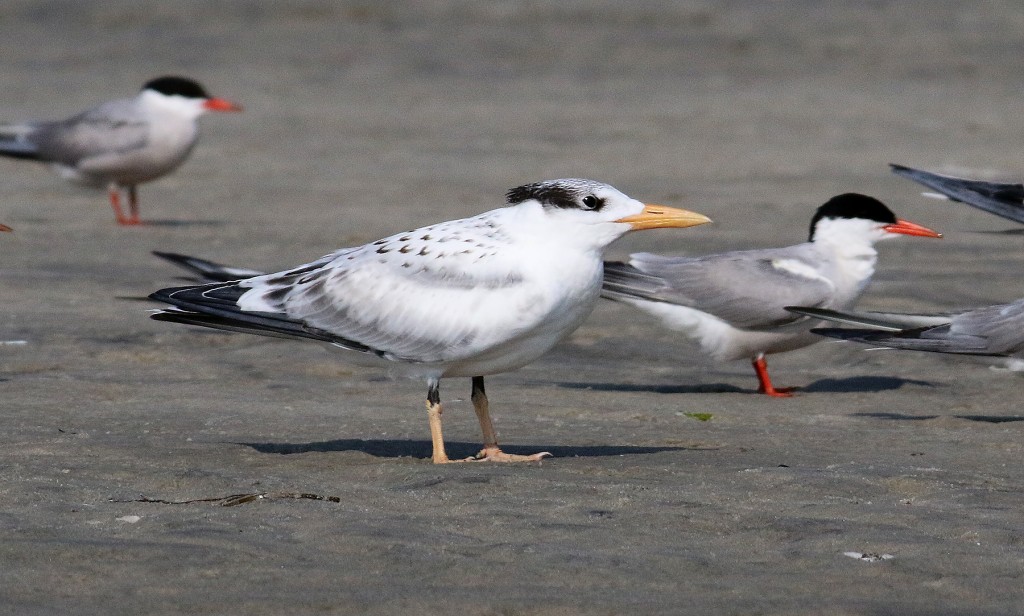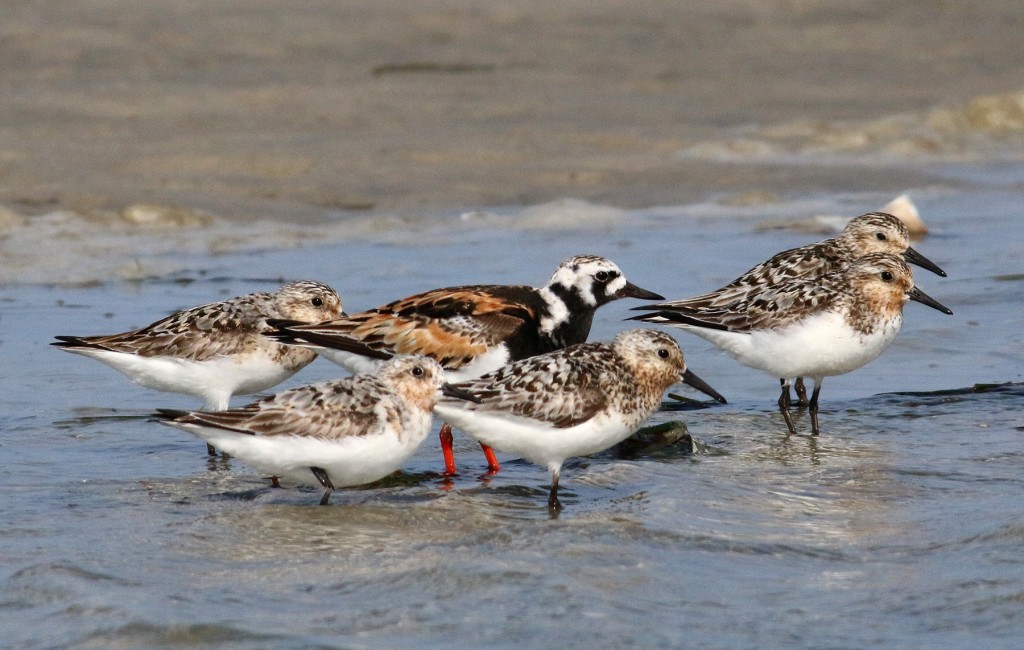Late July is the beginning of the Sedge Island season for me. Last year from late July into September a series of canoe trips into the Barnegat Bay Sedge Islands resulted in great birding on nearly every trip. An excursion there last week was as pleasant as can be, with dead-calm waters reflecting the sky and scenery. Birding was fine but not spectacular, yielding plenty of terns to study, and nice looks at a trio of Red Knots as the highlight. Two out-of-season species on this trip were an interesting plumaged Common Loon and a continuing pair of Black Scoters. Interestingly, from a distance the male scoter appeared to have a white wing, but examination of photos revealed an apparent lack of major flight feathers. Other explanations for this white patch (disease?) would be appreciated.

Birding the sand flats in the Sedge Islands on the calmest day that I’ve seen here. This is one reason why I keep returning back here. Photo by Karmela Moneta.
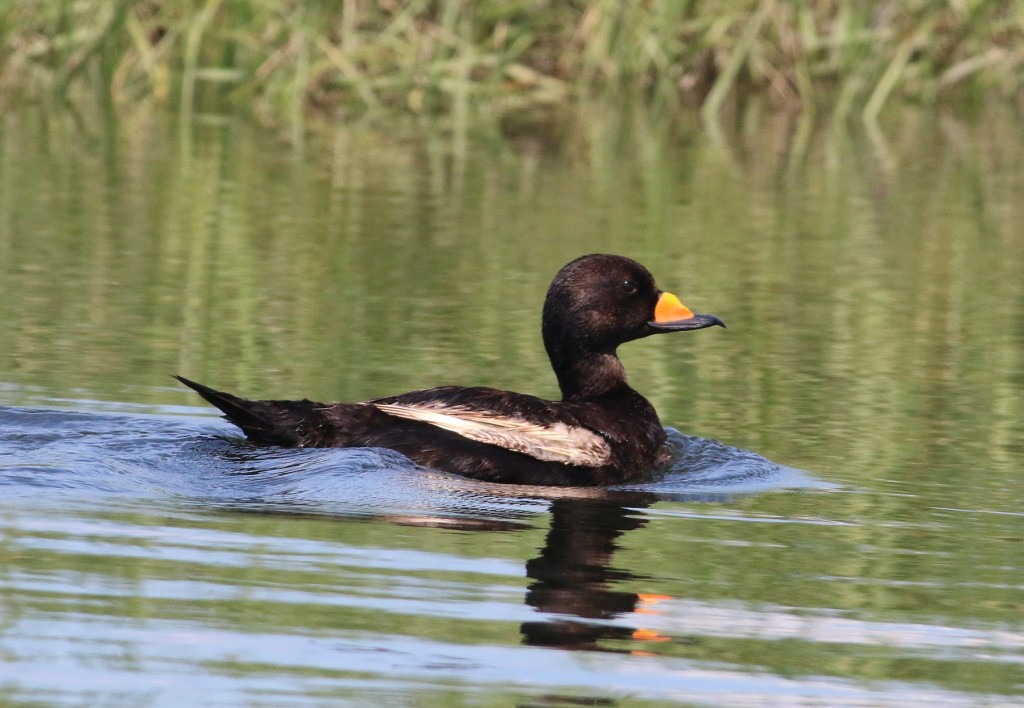
An adult male Black Scoter with a large whitish patch covering its wing. I assume that it is molting its flight feathers. Scoters are FAR more common here in NJ during winter.

Interesting plumage on this Common Loon. We’re not used to seeing them here in mid-summer. Photo by Karmela Moneta.
Today on 93-degreee day there was no better place to be than out on the water. For the second consecutive week, the species that I have come to expect or hope for in these islands (Marbled Godwit, Brown Pelican, Caspian Tern) were absent. A great deal of our time was spent studying the terns in all their varied plumages. The challenge of distinguishing Common from Forster’s Terns has plagued me for years, but I’ve finally reached a level of confidence with these species. The great thing is that here in the Sedges, both species can be seen side-by-side and in multiple plumage stages, making for excellent comparisons.
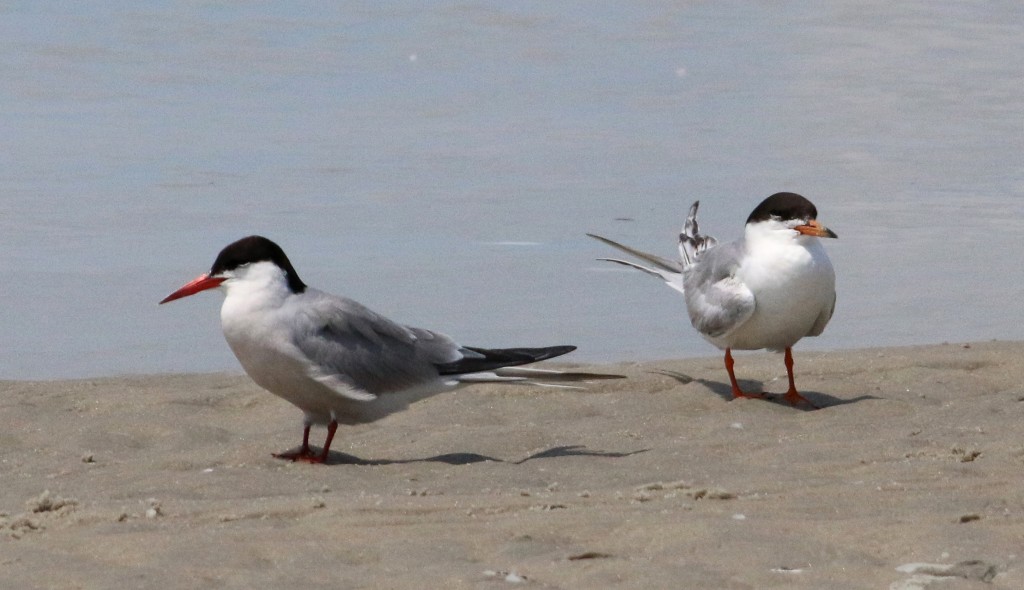
Common and Forster’s Terns side-by-side. Note the red bill, shorter legs, and black primary tips of the Common Tern on the left compared with the orange bill, longer legs, and gray primary tips on the Forster’s Tern on the right.
On our way out towards the inlet, I saw what appeared to be a Black Tern flying past us that unfortunately continued down the channel towards the sand flats. Drat. Darn. That was a species that I wanted to see well. After spending some time at the inlet and returning to the rapidly disappearing sand flats, I noticed a dark and small tern mixed in with the tern flock. Indeed, it was an adult Black Tern just starting to transition into non-breeding plumage. I have seen Black Tern here in the islands, but never in this plumage stage. It was a fantastic sight and yet another example of how anything can appear here. One bird and I was smiling for the next few hours.
